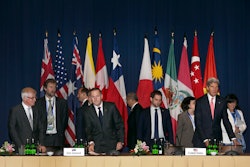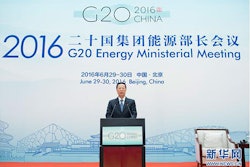
We still don’t know much about the Trans-Pacific Partnership (TPP) free-trade agreement being negotiated right now. It remains classified. What we do know comes from leaks and informed speculation by experts such as the Congressional Research Service. Still, the TPP is a big deal, and there’s a lot of discussion and controversy about its implications.
Looking at these discussions, we can project a few things about the TPP, and what it may mean for businesses and supply chains worldwide.
- It will primarily affect 12 countries. Current TPP members include Brunei, Chile, New Zealand, Singapore, the United States, Australia, Peru, Vietnam, Malaysia, Mexico, Canada and Japan.
- Trade impact may be low. Many TPP countries already have trade agreements in place with each other. The U.S., for instance, already has free trade with Canada, Mexico, Chile, Peru, Australia and Singapore. The TPP would unify this web of agreements and connect the missing threads. Malaysia and Vietnam should gain the most from the new connections. Also significant would be the establishment of free trade between the United States and Japan, since Japan is currently the fourth largest trading partner of the United States.
- Regulations and international standards may have a big impact. Given that the TPP isn’t creating many new free-trade relationships, its biggest play may be to establish international regulations—like labor standards, environmental standards and intellectual property (IP) protections.
- Companies may see profits go up—or down. There are going to be winners and losers. IP protections may favor some companies that have patents currently being violated. Other businesses may find themselves suddenly under IP lawsuits.
- Pharmaceuticals and agriculture may see large effects. The TPP may largely impact pharma and agriculture since the former is greatly affected by IP regulations, and the latter is greatly impacted by the removal of tariffs and subsidies.
- The TPP could divert trade. By encouraging regulations and protections, the TPP could cause more trade between TPP countries at the expense of non-TPP countries. In particular, the shift could reduce trade with China, which currently dominates many trade relationships in the Pacific region.
- Countries with little access to markets could grow. Countries previously unable to compete with the likes of China on manufacturing technology and supply chains could make themselves more attractive trading partners by ensuring regulatory compliance and protections for patents.
- Many countries may become better investment opportunities. A big effect of the North American Free Trade Agreement (NAFTA), the free-trade agreement between the U.S., Canada and Mexico, was increased investment in Mexican factories. The TPP could encourage similar investments in countries like Vietnam and Malaysia.
- Labor impacts are likely. The specifics aren’t known, but the TPP does include regulations about labor, which could raise the working conditions of many in developing countries. And on the trade side, expect to see outsourcing increase.
- The Investor-State Dispute Settlement (ISDS) is an elephant in the room. The ISDS provision is a high source of controversy. It creates a court and mechanism for businesses to take legal action if they feel countries are in violation of the treaty. Historically, in the case of NAFTA, most ISDS cases were dismissed and corporations had a hard time suing governments. Depending on what happens with the TPP, that could remain the same, or the impact for government programs, laws and standards could be significant.
A trade agreement this ambitious is going to produce winners and losers. Its long-term effects are hard to predict. Businesses operating in these markets face several unknowns. The best way to mitigate this uncertainty is to emphasize agility.
Agile supply chains have the ability to dynamically reconfigure themselves at any given time, minimizing disruptions and downtime. Because of all the complex relationships and processes involved in global supply chains, the key to agility is real-time communication between everyone involved. Information about where everything is and what all parties are doing needs to be instantly accessible to anyone who needs it. Trading partners or entire networks of regional partners need to be accessible in a flash. How quickly a company can shift plans or move production to a new region may be the difference maker between the real winners who pounce on the opportunity before them vs. those who are slow to react.
Cloud networks are currently the best technology to provide agility. They collect data from all partners in a common location. And like social networks, they connect parties through real-time notifications, alerts, tasks and timelines.
It may be frustrating to some that the TPP is a classified black box. But classified black boxes are exactly the kind of unpredictable surprises businesses need to be ready for in the 21st century. The TPP may be a looming unknown quantity, but by becoming agile, with the help of technology, companies can come out ahead, regardless of what side of the trade agreement they land on.














